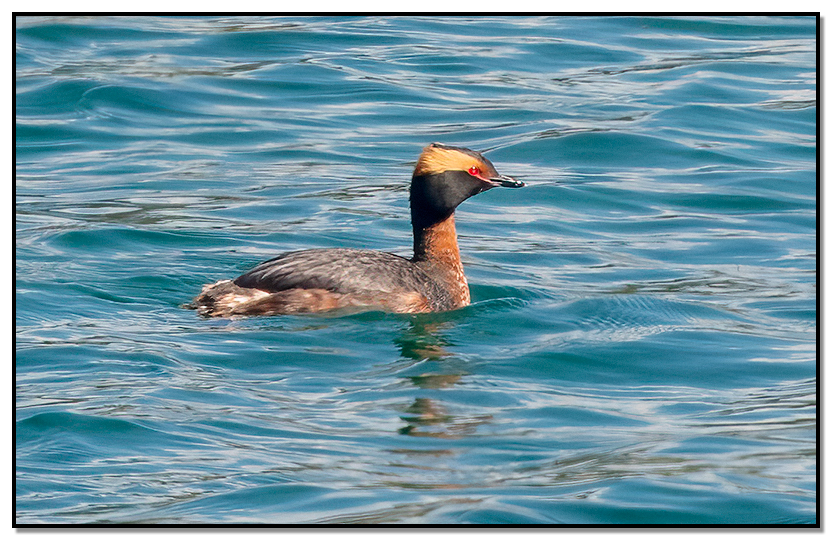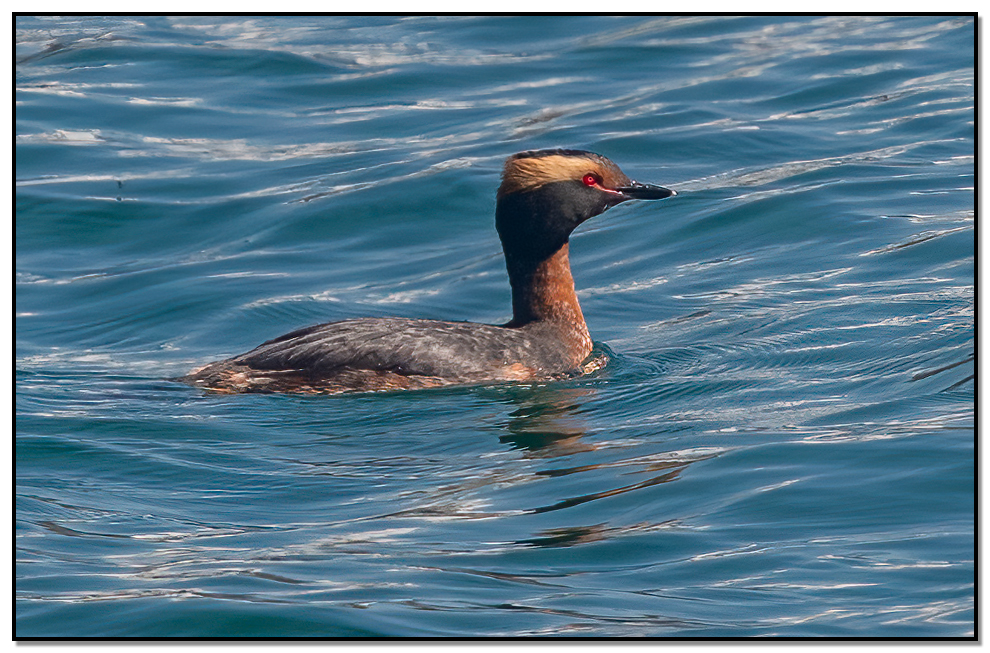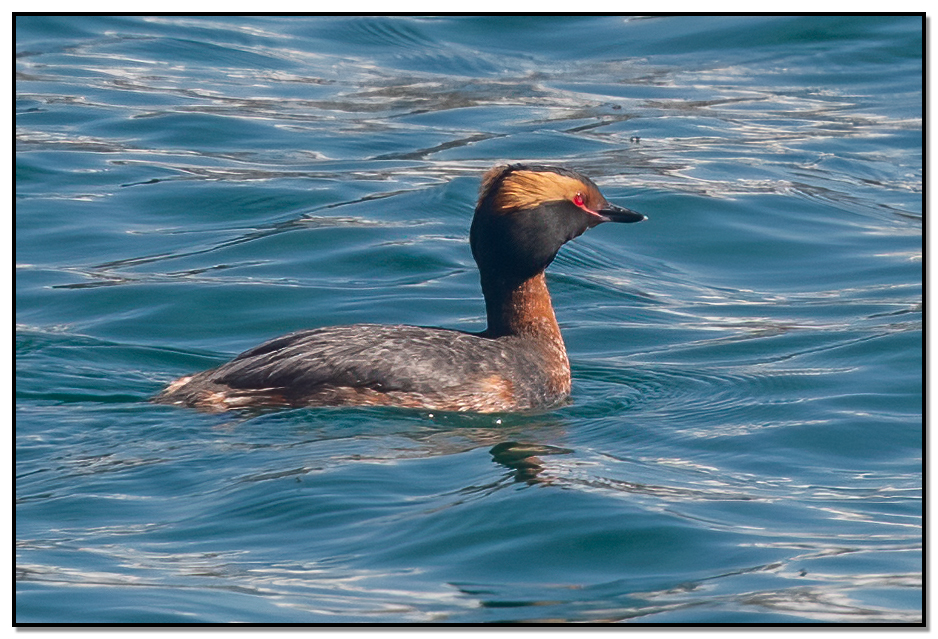Horned Grebe (Podiceps auritus)

- HABITAT - The Horned Grebe breeds across much of Canada, including central and northern Ontario, favoring freshwater lakes and marshes. During migration and in winter, it can be found along both coasts of North America and on large inland bodies of water, including the Great Lakes. This species prefers shallow freshwater wetlands with a mix of open water and dense vegetation during breeding season. In winter, it moves to coastal bays, estuaries, and occasionally inland lakes that remain ice-free. Look for them in small ponds and backwaters during migration.
- DIET - The Horned Grebe is a diving bird that feeds primarily on aquatic insects, small fish, crustaceans (like amphipods), and mollusks. It catches most of its prey underwater, using strong legs and sharp eyesight to locate food.
- FACTS - During breeding season, it sports golden "horns" behind its red eyes—one of the most striking plumages among grebes. In the winter, it undergoes a complete transformation into a black-and-white bird. Horned Grebes build floating nests anchored to aquatic vegetation. The Chicks ride on their parents' backs for safety and warmth—adorable and practical. Horned Grebes are classified as "vulnerable" in some regions due to habitat loss and pollution.

